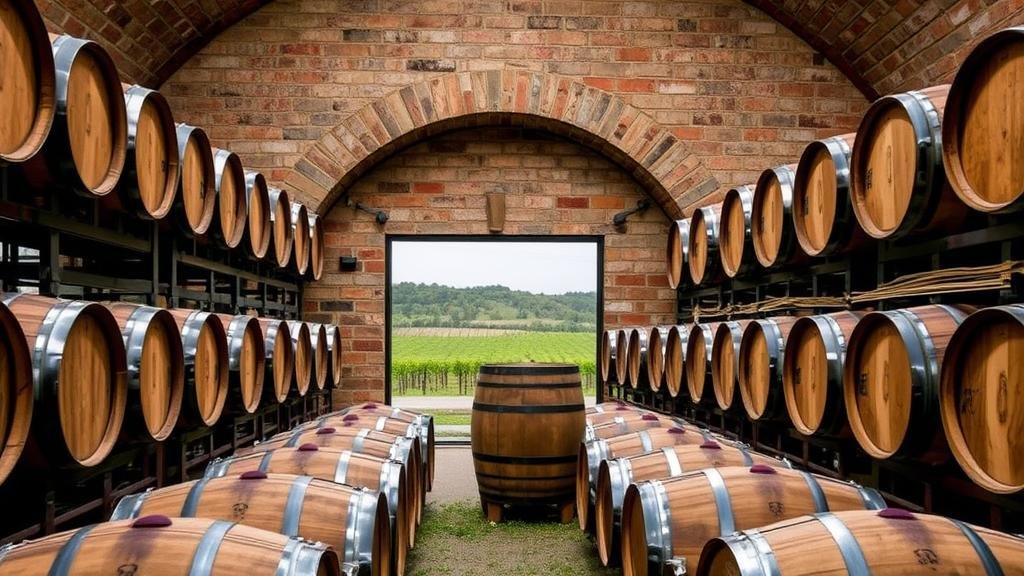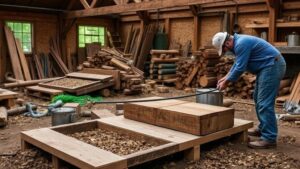Rediscovering Forgotten Vineyard Barrel Storage Sites for Winemaking Relics
Rediscovering Forgotten Vineyard Barrel Storage Sites for Winemaking Relics
The historical significance of vineyard barrel storage sites has often been overlooked in winemaking research. This article aims to explore the importance of these sites, their historical context, and the potential they hold for understanding winemaking practices of the past. By investigating previously forgotten storage locations, we can illuminate the often lost traditions and technologies that shaped the wine industry from its inception.
Historical Context of Vineyard Barrel Storage
Vineyard barrel storage sites date back to ancient civilizations, where the art of winemaking evolved significantly. earliest known winemaking sites can be traced to regions such as the Levant, dating back to around 6000 BC. These early production facilities utilized clay amphorae for fermentation and storage, which eventually transitioned to wooden barrels by the Middle Ages. The choice of wood, primarily oak, became intrinsic to flavor profiles and aging processes in wines.
Importance of Barrel Storage Sites
Barrel storage sites serve not only as functional spaces for aging wine but also as cultural and historical artifacts that reflect the evolution of winemaking techniques. According to a study published in the Journal of Wine Research, the tradition of barrel aging influences not only the flavor and style of wine but also the economics of wine production popularized in regions like Bordeaux and Tuscany.
- Preservation of Winemaking Techniques: Many traditional techniques, such as blending and bottling, are often preserved and practiced in historic barrel storage sites.
- Influence on Flavor Profiles: The interaction between the wine and the barrel affects the final profile of the wine, influencing consumer preferences.
Rediscovery Initiatives
In recent years, various initiatives have emerged to excavate and restore forgotten vineyard barrel storage sites. For example, the European Unions Heritage Vineyards project launched in 2018 aims to identify historical storage locations in regions such as Italy and France, with funding allocated for archaeological investigations and restorations.
The revival of these sites provides multiple benefits:
- Economic Revitalization: Many areas facing economic decline can boost local tourism through the restoration of historical sites.
- Educational Opportunities: These sites serve as living classrooms for future generations of winemakers and historians, fostering a deeper understanding of viticulture.
Case Studies: Successful Rediscoveries
Several case studies highlight successful rediscoveries of forgotten barrel storage sites:
1. Château Montelena, California
In 2018, Château Montelena embarked on a project to uncover its historic barrel storage cave, originally utilized in the 1880s. restoration yielded not only historical barrels but also vintage winemaking techniques that influenced their current processes. This resulted in a unique vintage that was presented at global wine competitions, earning accolades and drawing tourism.
2. Bodega El Cielo, Mexico
A similar initiative took place at Bodega El Cielo in Baja California. Researchers uncovered an old storage area that housed forgotten barrels from the 1950s. Restored to its former glory, this site has become a centerpiece for cultural tourism and educational tours, showcasing pre-modern wine aging processes.
Challenges and Future Directions
While the rediscovery of these sites presents significant opportunities, several challenges remain:
- Funding Constraints: Securing funding for archaeological excavations and restorations can be challenging in economically constrained regions.
- Property Rights Issues: Accessing privately owned vineyards for excavation may pose legal hurdles.
Future directions for rediscovering forgotten barrel storage sites may involve leveraging technology, such as GIS mapping, to identify historical land use patterns, and employing interdisciplinary teams comprising archaeologists, historians, and viticulturists to conduct comprehensive studies.
Conclusion and Actionable Takeaways
The rediscovery of forgotten vineyard barrel storage sites holds great promise in enhancing our understanding of winemaking history and preserving cultural heritage. Stakeholders in the wine industry, including vineyard owners and local governments, are encouraged to:
- Engage with historical societies to record oral histories and document practices associated with their vineyard traditions.
- Collaborate with academic institutions to research and restore barrel storage sites actively.
- Promote awareness of the historical importance of these sites within the wine tourism sector.
In summary, the systematic recovery and study of forgotten vineyard barrel storage sites present a unique opportunity to bridge the gap between past and present winemaking practices, thereby enriching both the historical narrative and contemporary wine culture.



